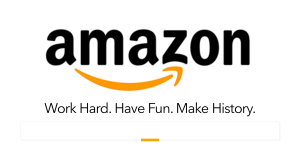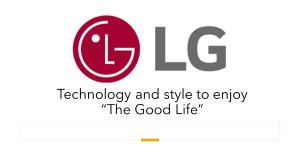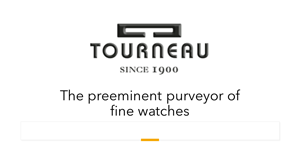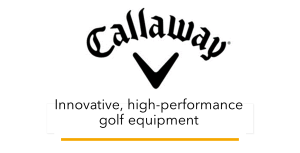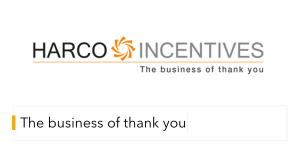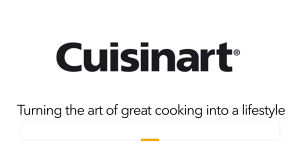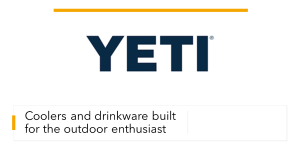Incentive Company Report Part 1: 6 Execs Share Their Visions
A Brief History
Views on Trends, Change, and Industry Awareness
What are the latest trends and issues facing incentive companies? This article is based on interviews with six CEOs of established incentive companies who responded to a request for comments sent this fall to nearly every company in the business. As background, click here for an RRN fall 2022 analysis of the claims made on their web sites by almost every incentive, recognition, and loyalty company of any size operating in the US.
Part one of this two-part series covers their diverse views on the state of the IRR field today; how the business is changing coming out of the pandemic, and what to make of the fact that it’s a $176 billion market almost no one has ever heard of. There is general agreement that the pandemic created more demand for engagement strategies; that demand is growing for a more integrated approach to technology; that clients today are more interested than ever in using experiences to create authentic bonds, and that the IRR field remains largely unknown, despite its size.
A Brief History
Incentive companies began to appear in the 1930s and then again after the war in the 1950s during the heyday of trading stamps when those companies realized they had to expand as a hedge against threats to their business model. Missouri-based Maritz, founded in 1894 as a jewelry company, beat them to it when it launched a sales incentive division in 1930. Gold Bond Trading Stamps, created by Curt Carlson in 1938, and Plaid Stamps launched sales incentive companies in the 1950s, including long-gone E.F. Macdonald. BI Worldwide was launched in Minnesota in 1950. Ohio-based Partners for Incentives was founded in 1951; Iowa-based ITA Group began in 1963. Journeymasters, an early incentive travel firm that expanded to offer all rewards, launched in Massachusetts in 1968. Illinois-based Creative Group and New-York based EGR International, joining the first incentive marketing companies offering travel, began operations in 1970. Dittman Incentive Marketing (Now Next Level Performance) followed shortly after in 1974, also riding the incentive travel wave brought on by the rise of commercial jet aircraft.
While all the companies are privately held, the largest incentive companies in the field probably do not exceed $500 million in gross sales, including merchandise, travel, and other rewards and services, with most having gross sales well below $100 million.
Views on Trends, Change, and Industry Awareness
To assess how incentive company executives view their role in the market today, RRN reached out to the several dozen CEOs of incentive companies and received answers from the following executives, showing how long their firms have been in business.
Jacque Busby, CEO of 30-year-old Luxe Incentives (30 years)
Rob Danna, Senior Vice President of ITA Group (49 years)
Brian Galonek, CEO of All-Star Incentive Marketing (50 years)
Mike May, CEO of Brightspot (28 years)
Lincoln Smith, Chief Strategy Officer, HMI Performance Incentives (42 years)
Gerry Wiatrowski, Co-Founder, Incentco (11 years)
1. RRN. What trends to you see in the incentive business in terms of types of customers, programs, requests, etc.
.jpeg) Jacque Busby, Luxe Incentives. Because our business is historically incentive travel experiences, we have seen a strong comeback. Most of our clients run sales and channel programs, and they want travel. While for the most part, they are staying closer to home, either in the US or nearby destinations, they are looking for formats offering more opportunities to connect and share experiences. The desire for authentic experiences is real. While a lot of traditional incentive travel customers do not need to be convinced of return or investment, we believe it’s an important part of our toolkit, and always stress it. We also are a big believer in the need to create a 365-day-a-year experience around our travel programs, so we are focusing on providing our clients a variety of Enterprise Engagement and Employee Engagement technologies to keep the community alive throughout the year.
Jacque Busby, Luxe Incentives. Because our business is historically incentive travel experiences, we have seen a strong comeback. Most of our clients run sales and channel programs, and they want travel. While for the most part, they are staying closer to home, either in the US or nearby destinations, they are looking for formats offering more opportunities to connect and share experiences. The desire for authentic experiences is real. While a lot of traditional incentive travel customers do not need to be convinced of return or investment, we believe it’s an important part of our toolkit, and always stress it. We also are a big believer in the need to create a 365-day-a-year experience around our travel programs, so we are focusing on providing our clients a variety of Enterprise Engagement and Employee Engagement technologies to keep the community alive throughout the year.We do finally see more interest in measurement. The companies that run regular programs believe in them, so many haven’t felt a need for clear analysis. Our strength has always been and always will be serving as trusted providers of managed outsourcing services in travel and all areas of engagement, starting with engagement technology, and always with an eye to ROI.
.jpeg) Rob Danna, ITA Group. We see four key trends.
Rob Danna, ITA Group. We see four key trends.1. Incentives as part of the employer value proposition. Dramatic hiring shifts are driving companies to examine how to be even more competitive in the job market, and a strategic approach to training, incentive and recognition programs is an important part of a company’s full benefits package. Incentive and recognition programs must drive real world KPIs (key performance indicators) and bottom-line results. Gone are the days of installing a recognition app and letting it run on autopilot. All programs today must be analyzed and correlated to business results.
2. Broader reach. While many incentive and recognition programs have traditionally focused on top performers, senior team members, and office workers, program owners are evaluating their earning structures to reach more employees and channel partners across all levels, locations, business areas and roles.
3. Personalization in incentive and recognition programs has been a trend over the past several years, but there will be an increased need for customizing the incentive experience. Individual preferences, targeted communications, meaningful goals, and data-driven nudges will help participants engage at higher levels and help companies realize greater results.
4. Skills development. While people crave a career path at the companies they work, it’s still a challenge to get them engaged in training. Activating in training to upskill and reskill is imperative given how fast change is occurring around us. Companies will be looking for new, innovative ways to bring training to life and to inspire those representing their brand to engage in offered training. New ways of delivering training, as well as recognition and incentives tied to training milestones, will be incorporated to focus attention on development.
ITA Group’s roadmap this coming year will center in creating meaningful, timely, data-driven touchpoints that facilitate behavior change. We will leverage a reinforcement engine of learning + incentive + recognition to inspire, motivate and celebrate people. We are focusing on the following opportunities.
1. Connecting disparate technology solutions, including varying incentive and recognition tools and programs adopted across different business units. Technology offerings have been evolving fast and HR/Compensation teams have been implementing targeted HR solutions to streamline administration and improve the employee experience. Today these many technologies are offering a fragmented employee experience resulting in low engagement across the many technology solutions with risk of inequity when different business areas handle tactics like recognition independently without an enterprise strategy and program. The opportunity is a need for user experience mapping and technology integrations for a more seamless employee experience.
2. Budget. With demand for higher compensation to get talent in the front door and heavy investments in HR technology the past several years, finding the budget to engage employees ongoing and recognize them appropriately will be a challenge. The opportunity is to create the business case for ongoing incentives, recognition, and rewards, as it’s critical to infuse this into culture to ensure employees feel valued and stay engaged.
3. Employee engagement and motivation expertise. HR teams are being asked to stretch themselves to serve as strategic resources for the organization on how to engage and recognize employees, something many HR professionals are not formally trained on. The opportunity is to have experts at the table to help clients design behavior change solutions that meet the unique business and cultural needs of each company.
4. ESG (Environmental, Social Governance) initiatives will open many doors for behavior modification. Most executives are working on their ESG roadmap and understand it will take a sustained campaign with focused incentives and recognition beyond the C-suite on priorities to transform organizations to be attractive to the next generation of top talent.
 Brian Galonek, All-Star Marketing. Even more so than before, it is all about people right now. Specifically keeping your employees happy and engaged at work to avoid actual quitting and quiet quitting (workers who stay with a company but give the minimum effort). Even with a recession looming, the US is at full employment and there are 11 million job openings. No company can afford to see their most valuable assets walk out the door. It puts pressure on all areas of operations, from training to customer service, from sales to safety and everywhere else in between
Brian Galonek, All-Star Marketing. Even more so than before, it is all about people right now. Specifically keeping your employees happy and engaged at work to avoid actual quitting and quiet quitting (workers who stay with a company but give the minimum effort). Even with a recession looming, the US is at full employment and there are 11 million job openings. No company can afford to see their most valuable assets walk out the door. It puts pressure on all areas of operations, from training to customer service, from sales to safety and everywhere else in betweenOur focus this coming year, across just about all vertical industry groups, is about helping our clients climb the ladder from engaging with employees to inspiring them to engage with each other, with the intention of ensuring that organizational objectives are met far and wide.
 Mike May, Brightspot. Key trends in our business: nflation impacting events with what I call 10-20-30 increases: 10% for food and beverage; 20% for hotel rooms, and 30% for airfare. Some companies understand and are increasing their budgets accordingly, especially for club trips, but not as much for meetings like SKOs (sales kick-off meetings.) Other execs seem unaware that the cost increases they experience as consumers are affecting their business expenses as well.
Mike May, Brightspot. Key trends in our business: nflation impacting events with what I call 10-20-30 increases: 10% for food and beverage; 20% for hotel rooms, and 30% for airfare. Some companies understand and are increasing their budgets accordingly, especially for club trips, but not as much for meetings like SKOs (sales kick-off meetings.) Other execs seem unaware that the cost increases they experience as consumers are affecting their business expenses as well. On the non-cash rewards, I feel strongly about two trends that should be occurring but are not:
1. More enablement or learning incentives. With turnover and position reshuffling, a lot of sales representatives have new responsibilities. Companies should be putting more emphasis on sales enablement, especially after two years of Covid confusion.
2. More quarterly sales contests. Companies should be operating more short-term incentives to re-focus reps on desired business goals and products.
 Lincoln Smith, HMI Performance. One of the trends that I’m excited about is the growing emphasis on experiences. More of our clients are looking for more experiential types of offerings: there's a lot of desire and pent-up demand for unique experiences that reflect their brands. In the world of sales and channel programs in which we largely operate, our customers are really trying to find ways to connect, which extends beyond the reward to how they market the program and communicate over time, starting with the over-arching theme. This is about trying to make relationships less transactional and more emotional. So, our role as an incentive company is to really understand the business goals, the target audience, the culture, the values of the sponsoring organization, and from that, how to create unforgettable experiences to engage their audience on a continual basis, no matter what the reward.
Lincoln Smith, HMI Performance. One of the trends that I’m excited about is the growing emphasis on experiences. More of our clients are looking for more experiential types of offerings: there's a lot of desire and pent-up demand for unique experiences that reflect their brands. In the world of sales and channel programs in which we largely operate, our customers are really trying to find ways to connect, which extends beyond the reward to how they market the program and communicate over time, starting with the over-arching theme. This is about trying to make relationships less transactional and more emotional. So, our role as an incentive company is to really understand the business goals, the target audience, the culture, the values of the sponsoring organization, and from that, how to create unforgettable experiences to engage their audience on a continual basis, no matter what the reward. Gerry Wiatrowski, Incentco. For us, the key trend is a focus on aligning the interests of stakeholders. For instance, in multi-family housing, tenant engagement has a lot to do with the quality of the services provided by the employees, not to mention referrals. Our technology is the organic result of organizations seeking to digitalize their stakeholder experiences, putting their communications, learning, rewards and recognition, and collaboration on one smartphone platform. They are more interested than ever in measurable results, and they are rewards neutral. In other words, they are open to whatever specific rewards strategy that makes sense to their business and don’t want to be boxed in.
Gerry Wiatrowski, Incentco. For us, the key trend is a focus on aligning the interests of stakeholders. For instance, in multi-family housing, tenant engagement has a lot to do with the quality of the services provided by the employees, not to mention referrals. Our technology is the organic result of organizations seeking to digitalize their stakeholder experiences, putting their communications, learning, rewards and recognition, and collaboration on one smartphone platform. They are more interested than ever in measurable results, and they are rewards neutral. In other words, they are open to whatever specific rewards strategy that makes sense to their business and don’t want to be boxed in.2. RRN: How has the business changed if at all coming out of the pandemic?
Jacque Busby, Luxe Incentives. For us of course, with the traditional focus on travel, the big plus is that the business is coming back, but we’re not about to rest on our laurels. I have always been a big believer in ROI and connections, and I think the interest in being able to measure the value of experiences and connections will only grow. Our focus is on helping customers maintain relationships throughout the year through enterprise or employee engagement technologies based on their needs, so that the travel experiences are simply part of an ongoing relationship. I believe the demand for ROI will only grow, not only because of the economy but because of the pressures coming from ESG (environmental, social, governance) investors to understand how companies treat their people.
Rob Danna, ITA Group. Flexibility in how, when and where talent works and the new way of doing work post-pandemic is the biggest change. With talent reshuffling and challenges in finding and retaining talent, employees have shifted into the driver’s seat with demands for improved compensation, flexibility, benefits, and growth opportunities. As a result, employers are improving benefits and compensation packages while also putting considerable focus on inclusive, equitable policies and cultures that support people and their growth, while also creating a sense of belonging.
Brian Galonek, All-Star. Employees have had the upper hand for the past 18 to 24 months, and they are consistently playing that hand now. Large household names like Apple are fielding organized complaints from workers about returning to work at all. Employees have been given a taste of true work-life freedom and are flexing their muscles to hold onto it. Meanwhile, companies crave the in-person interactions that leadership is sure helps a company succeed over the long run. Workers perhaps have never had the power they have now, and employers must tread lightly and be nimble to hold onto what they have while maximizing their work product in an increasingly competitive marketplace.
There are far more organizations now than I have seen in over 30 years in this industry that are willing to create and properly fund employee engagement programs to help improve their culture. Healthy companies are now ready to spend (on something in addition to salary increases) to hold onto, and further deepen. their connections to their employees.
Gerry Wiatrowski, Incentco. We weren’t really affected by the pandemic. Because our traditional focus has been on multi-family housing with very few direct competitors, we have continued to see growing demand for a more systematic and measurable way of building relationships, which has opened up opportunities in all areas of business. We believe this is the early stage of a very large marketplace as more companies understand how easy it is to develop one-to-one relationships with every stakeholder through their smartphones. I believe the potential of Enterprise Engagement technologies could be similar to CRM (Customer Relationship Management) in the early 1990s.
3. RNN: What do you make of industry statistics showing an industry with sales of $176 billion when there are probably no more than 60 incentive and recognition companies in the US, based on the analysis we have just conducted of the incentive company marketplace.
Jacque Busby, Luxe Incentives. We’ve always known that a lot of companies turn to travel agencies for their programs, not even aware that there are experts like us to address who can add so much more value in terms of program design, experience, and impact. I try to address this issue in the organizations I belong to, including WBENC (Womens Business Enterprise National Council), and local business organizations or charities. I also take advantage of the services of the Enterprise Engagement Alliance, in part because of what it is doing to help elevate our field and make it better known. So much more work has to be done in this area, which is why I have always focused on ROI, as that I believe is the ultimate value proposition of the solutions we and our partners provide.
Rob Danna, ITA Group. Many companies manage incentive and recognition programs in-house and reward with cash. While companies believe this saves money through use of internal resources, the downstream risk is that rewarding with cash is expensive because once it’s issued it is spent and is quickly perceived by recipients as money in their paycheck without any emotional connection to the achievement or the company who rewarded it. Working with a partner enables insights into trending best practices and what other companies are doing, while also enabling flexibility in reward strategies to maximize the investment.
Brian Galonek, All-Star. The marketplace is huge for sure. I think you'd be hard pressed to find a company of any size that is not using some type of employee recognition/rewards program, even if it just a basic years of service program or the like. I think the largest part of the answer as to where the industry volume is going, if not to specific recognition companies, is that much of the awards are being sourced at retail. Other explanations likely include:
- There are more than 60 companies that sell into the space. Some are not US-based and others are well hidden as they do not join industry groups and/or they provide highly specialized services.
- There is volume in the incentive industry space that comes from corporate identity (logo merchandise) providers, travel incentive companies, marketing agencies, and more.
- Some companies design and run their own programs and reward with their own products (think of a restaurant chain giving free meals to employees) as a perk or reward.
Gerry Wiatrowski, Incentco. Since we did not come from the incentive industry, we, like most businesspeople, had never heard of it. We didn’t get into the business to sell rewards. Our clients are buying solutions to their people management issues that include rewards, whether that means their customers, their distribution partners, or their employees. They usually don’t care which rewards we offer but rather how the program we support will achieve their objectives and how those rewards will help drive results. I think the lack of awareness of this field is an enormous detriment, which is why we support of the Enterprise Engagement Alliance’s outreach efforts.
Coming in Part 2:
- Is there growing demand for more reporting, more strategic program design, more return-on-investment measurement?
- What trends occurring in the awards side of the business?
- Most IRR companies don’t focus on program design on their web sites. Why?
- Is there a world in which companies will pay serious fees for advisory services and technology as they do in customer relationship management?
- Advice for companies looking to engage an incentive company.
Profit From the “S” of Environmental, Social, Governance (ESG)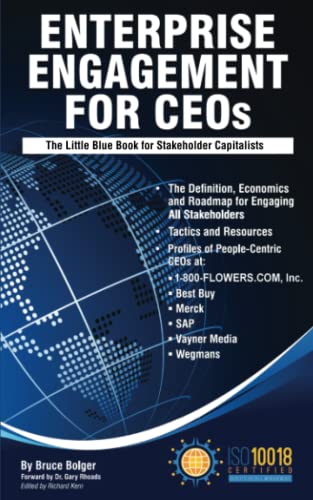
Through education, media, business development, advisory services, and outreach, the Enterprise Engagement Alliance supports boards, business analysts, the C-suite, management in finance, marketing, sales, human resources and operations, etc., educators, students and engagement solution providers seeking a competitive advantage by implementing a strategic and systematic approach to stakeholder engagement across the enterprise. Click here for details on all EEA and RRN media services.
1. Professional Education on Stakeholder Management and Total Rewards
3. Fully Integrated Business Development for Engagement and Total Rewards
Strategic Business Development for Stakeholder Management and Total Rewards solution providers, including Integrated blog, social media, and e-newsletter campaigns managed by content marketing experts.
4. Advisory Services for Organizations
Stakeholder Management Business Plans; Human Capital Management, Metrics, and Reporting for organizations, including ISO human capital certifications, and services for solution providers.
5. Outreach in the US and Around the World on Stakeholder Management and Total Rewards
The EEA promotes a strategic approach to people management and total rewards through its e-newsletters, web sites, and social media reaching 20,000 professionals a month and through other activities, such as:

Through education, media, business development, advisory services, and outreach, the Enterprise Engagement Alliance supports boards, business analysts, the C-suite, management in finance, marketing, sales, human resources and operations, etc., educators, students and engagement solution providers seeking a competitive advantage by implementing a strategic and systematic approach to stakeholder engagement across the enterprise. Click here for details on all EEA and RRN media services.
1. Professional Education on Stakeholder Management and Total Rewards
- Become part of the EEA as an individual, corporation, or solution provider to gain access to valuable learning, thought leadership, and marketing resources.
- The only education and certification program focusing on Stakeholder Engagement and Human Capital metrics and reporting, featuring seven members-only training videos that provide preparation for certification in Enterprise Engagement.
-
EEA books: Paid EEA participants receive Enterprise Engagement for CEOs: The Little Blue Book for People-
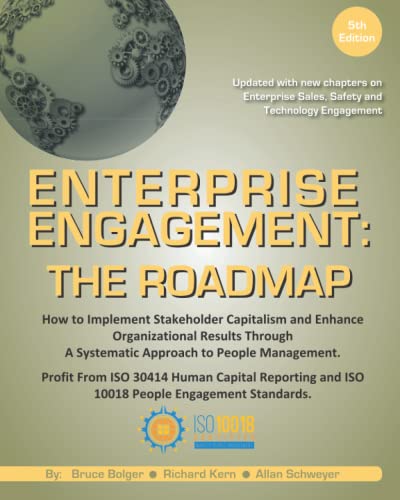 Centric Capitalists, a quick implementation guide for CEOs; Enterprise Engagement: The Roadmap 5th Edition implementation guide; a comprehensive textbook for practitioners, academics, and students, plus four books on theory and implementation from leaders in Stakeholder Management, Finance, Human Capital Management, and Culture.
Centric Capitalists, a quick implementation guide for CEOs; Enterprise Engagement: The Roadmap 5th Edition implementation guide; a comprehensive textbook for practitioners, academics, and students, plus four books on theory and implementation from leaders in Stakeholder Management, Finance, Human Capital Management, and Culture.
- ESM at EnterpriseEngagement.org, EEXAdvisors.com marketplace, ESM e–newsletters, and library.
- RRN at RewardsRecognitionNetwork.com; BrandMediaCoalition.com marketplace, RRN e-newsletters, and library.
- EEA YouTube Channel with over three dozen how-to and insight videos and growing with nearly 100 expert guests.
3. Fully Integrated Business Development for Engagement and Total Rewards
Strategic Business Development for Stakeholder Management and Total Rewards solution providers, including Integrated blog, social media, and e-newsletter campaigns managed by content marketing experts.
4. Advisory Services for Organizations
Stakeholder Management Business Plans; Human Capital Management, Metrics, and Reporting for organizations, including ISO human capital certifications, and services for solution providers.
5. Outreach in the US and Around the World on Stakeholder Management and Total Rewards
The EEA promotes a strategic approach to people management and total rewards through its e-newsletters, web sites, and social media reaching 20,000 professionals a month and through other activities, such as:
- Association of National Advertisers Brand Engagement 360 Knowledge Center to educate brands and agencies.
- The EEA Engagement widget to promote, track, and measure customers/employee referrals and suggestions that can be connected to any rewards or front-end program management technology.
- The Stakeholder Capitalism free insignia to promote a commitment to better business.
- The BMC Brand Club and transactional storefronts to educate corporate and agency buyers on the IRR market.
- The EME Gold program to educate the top 3% of promotional consultants on selling engagement and rewards services.







